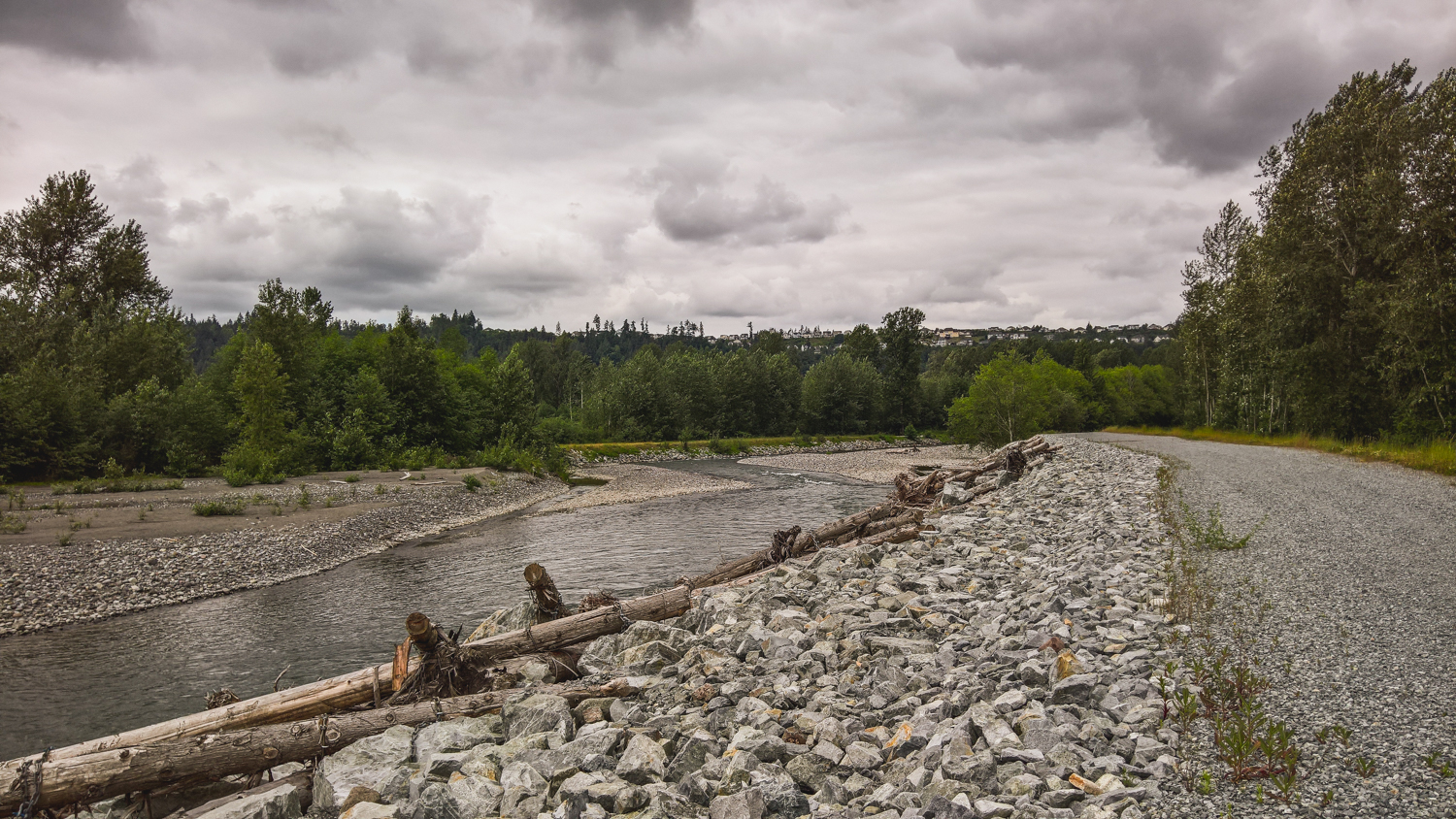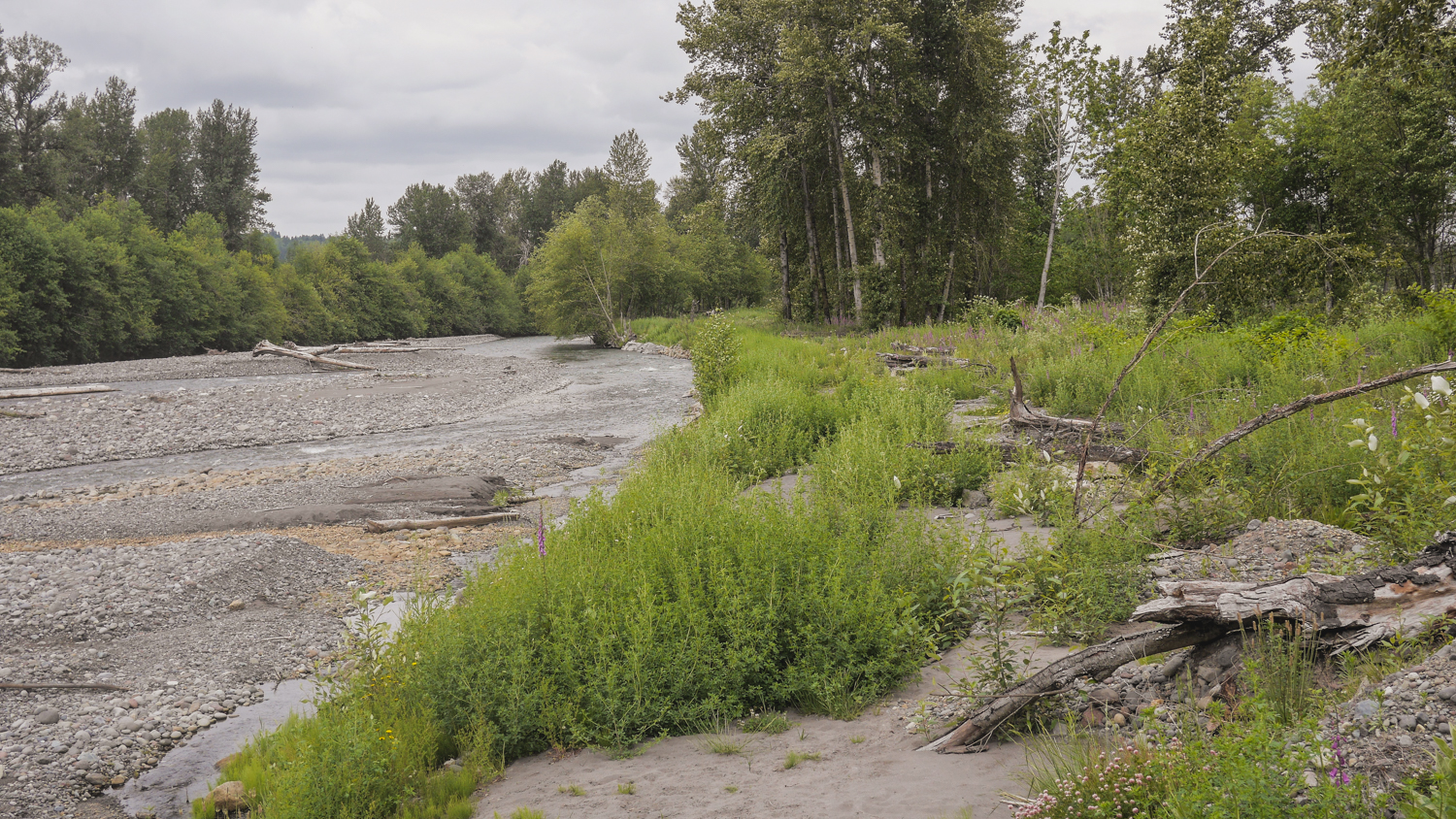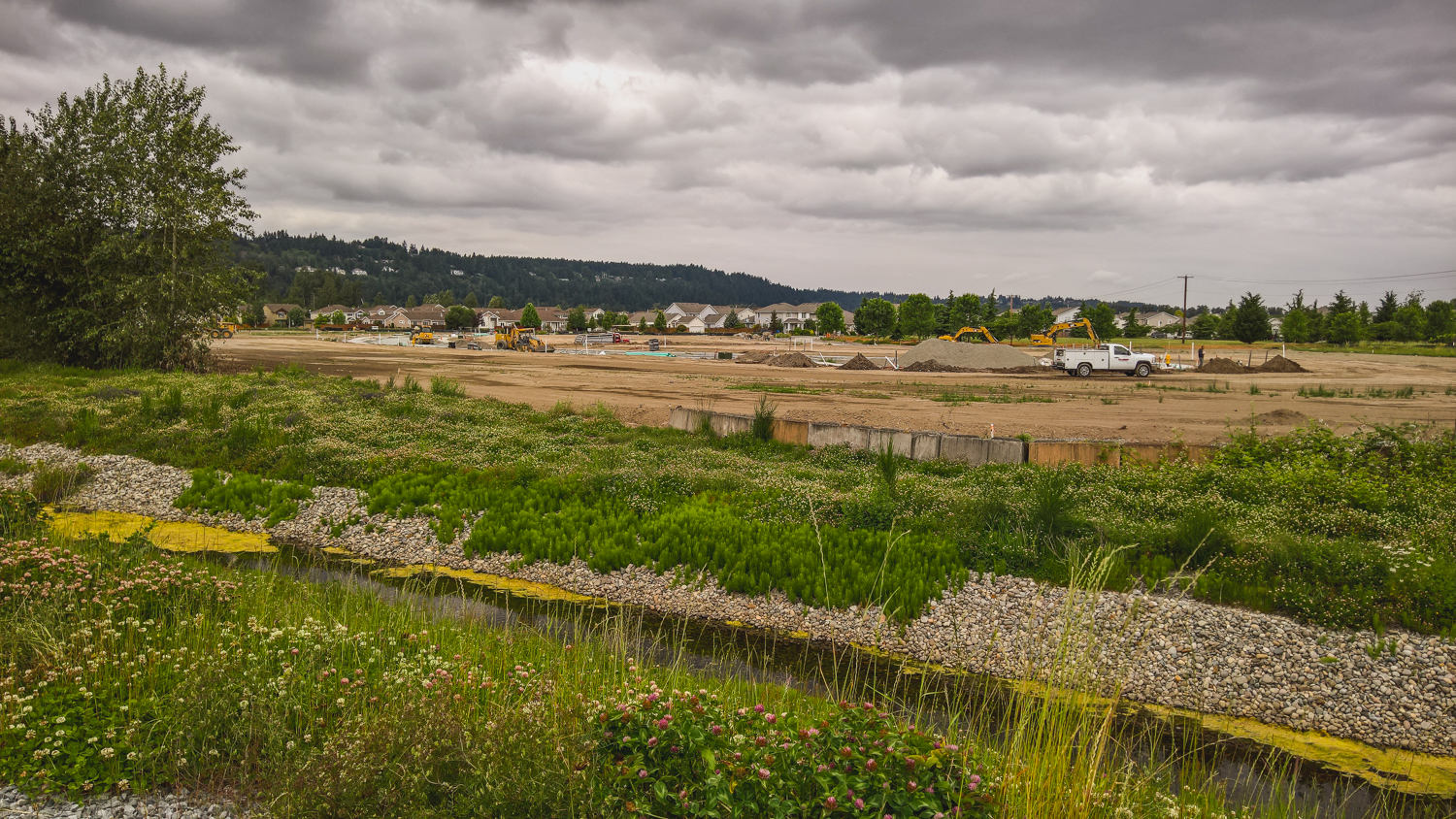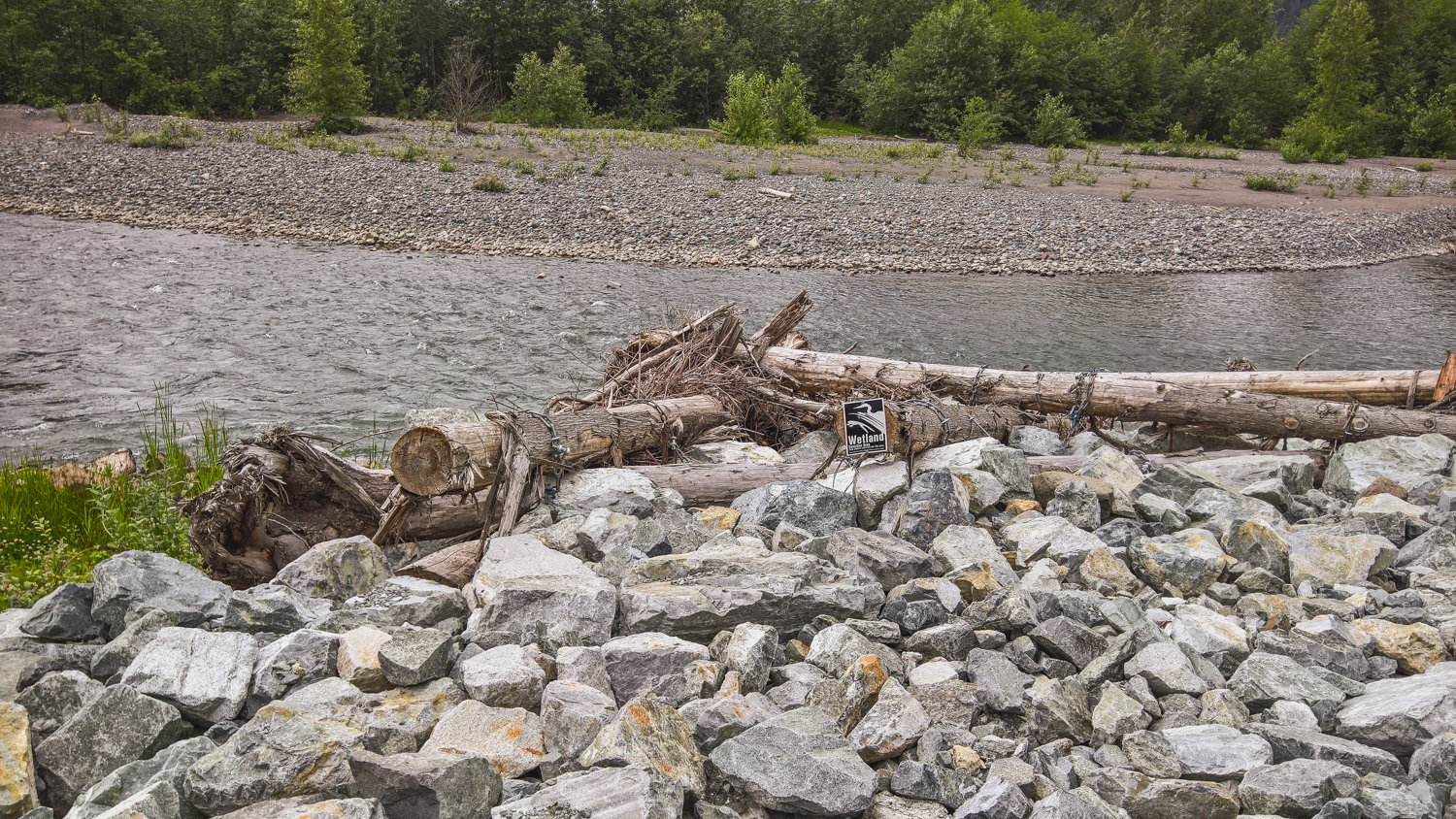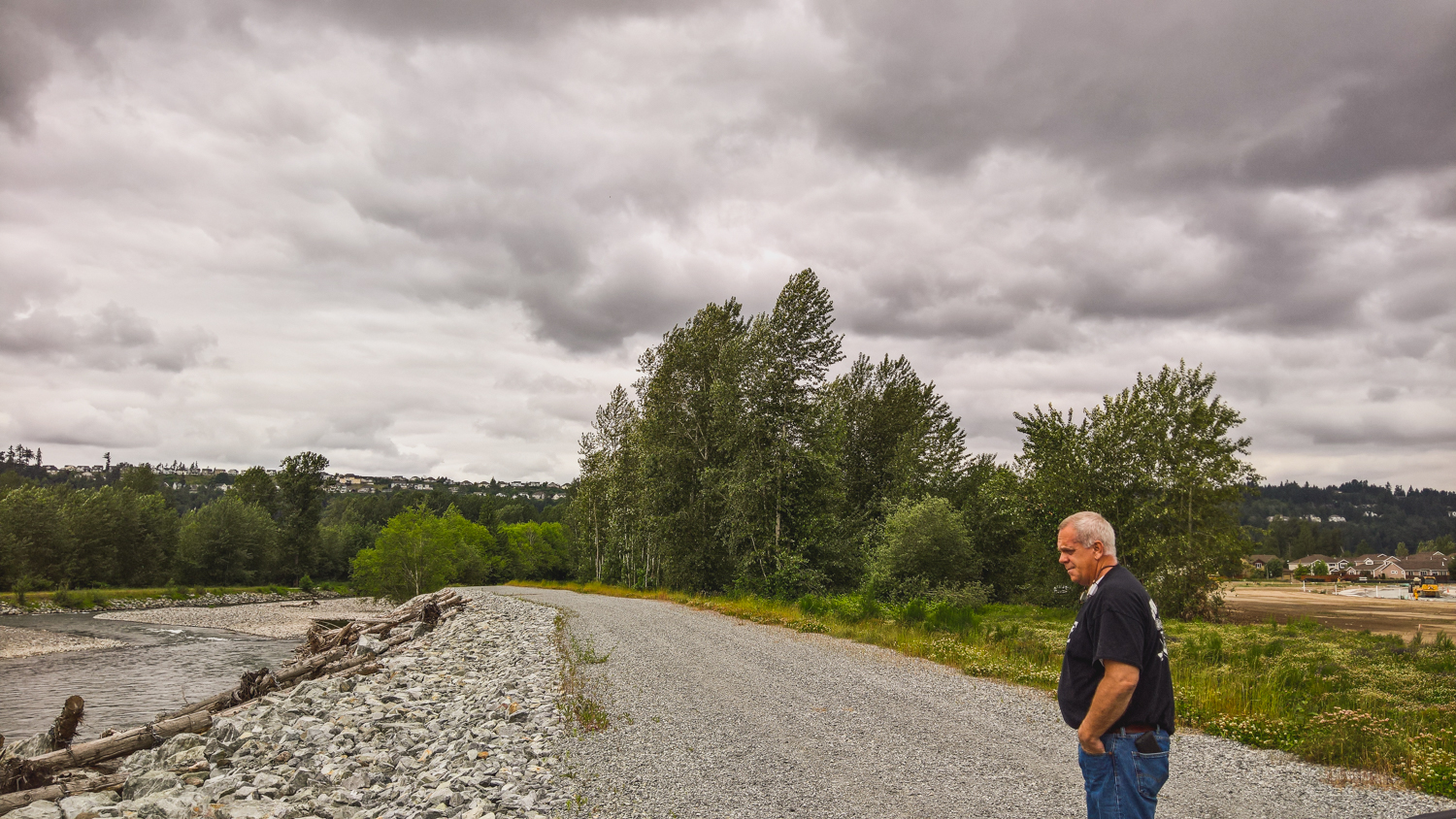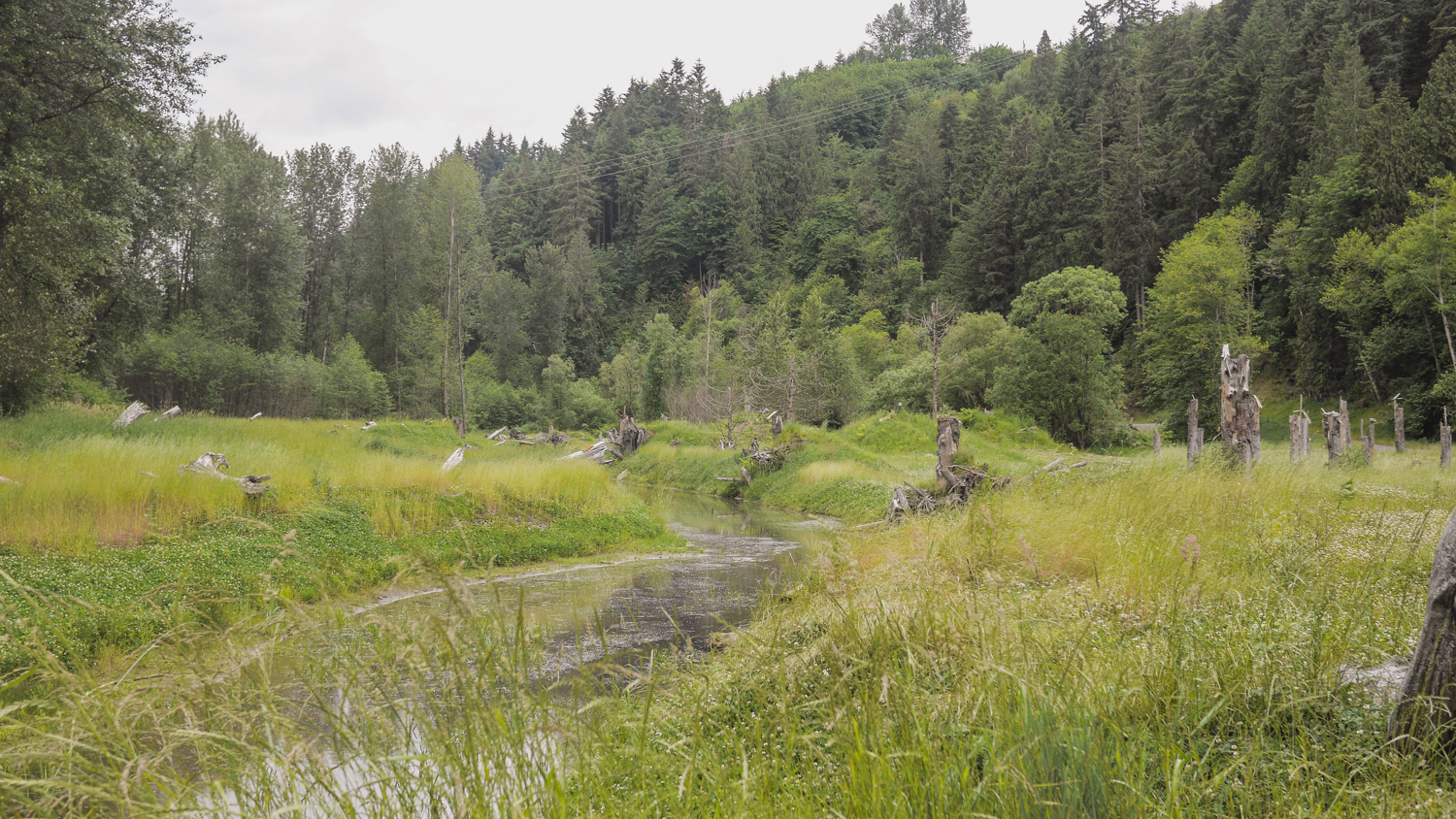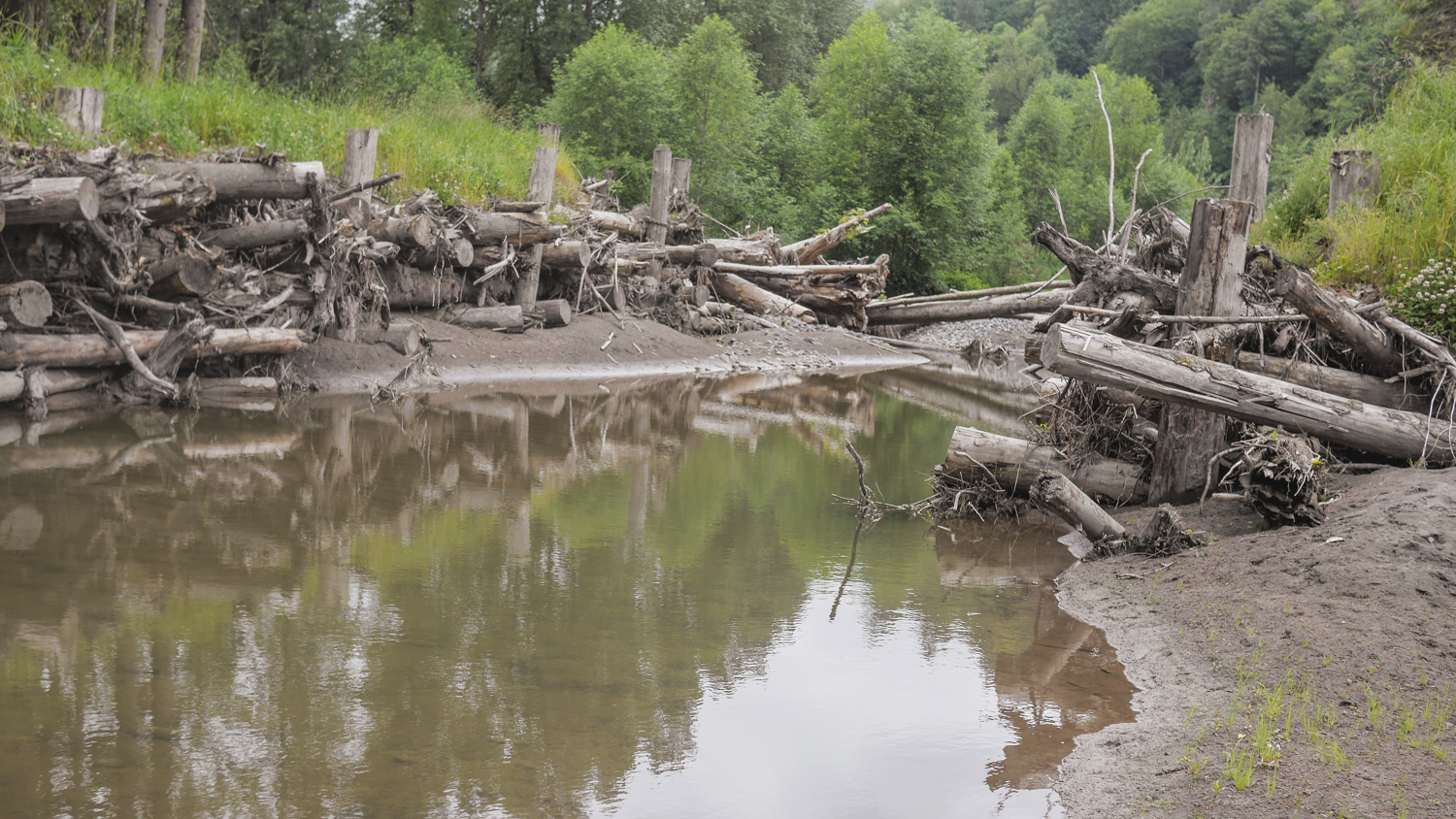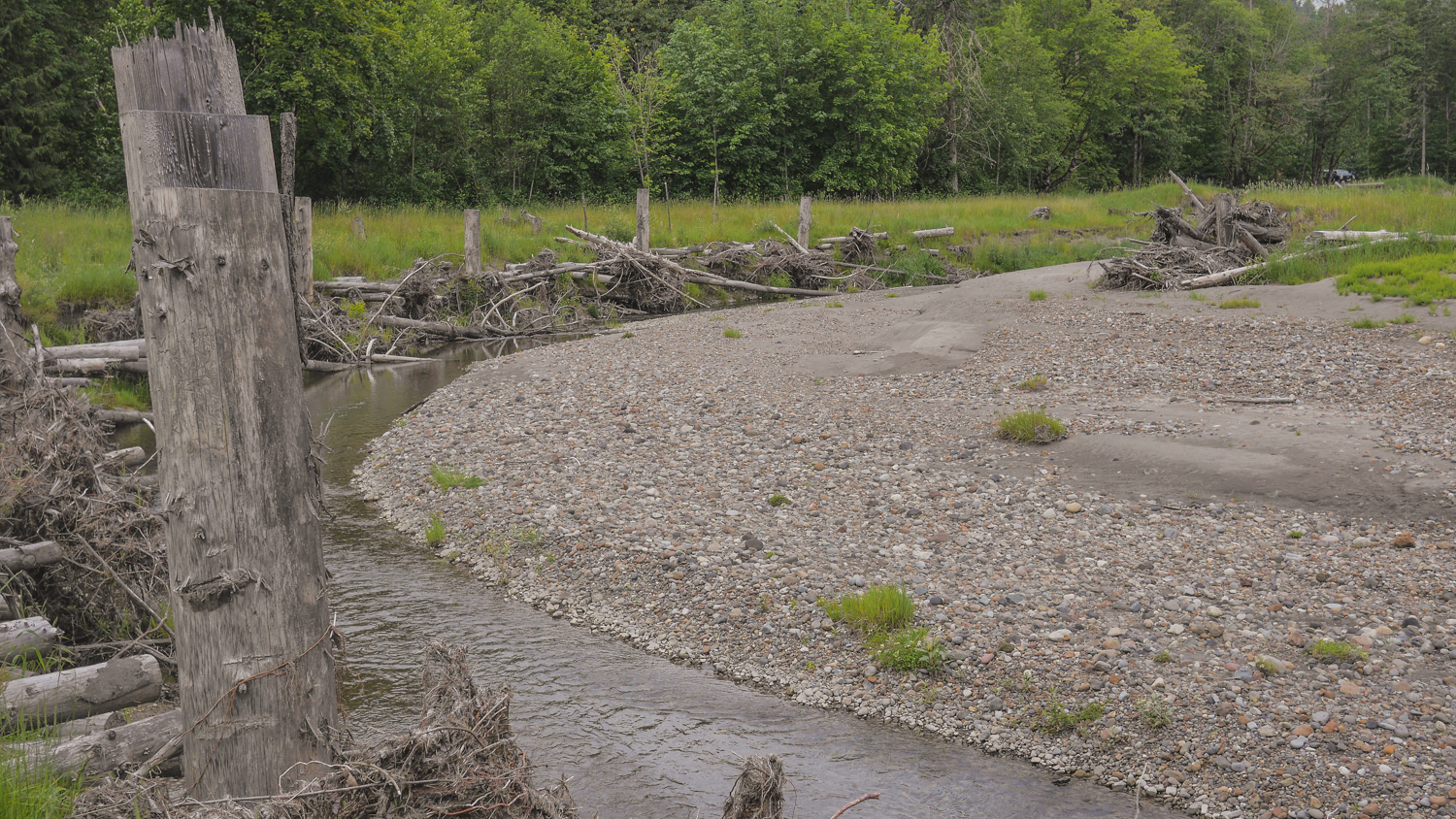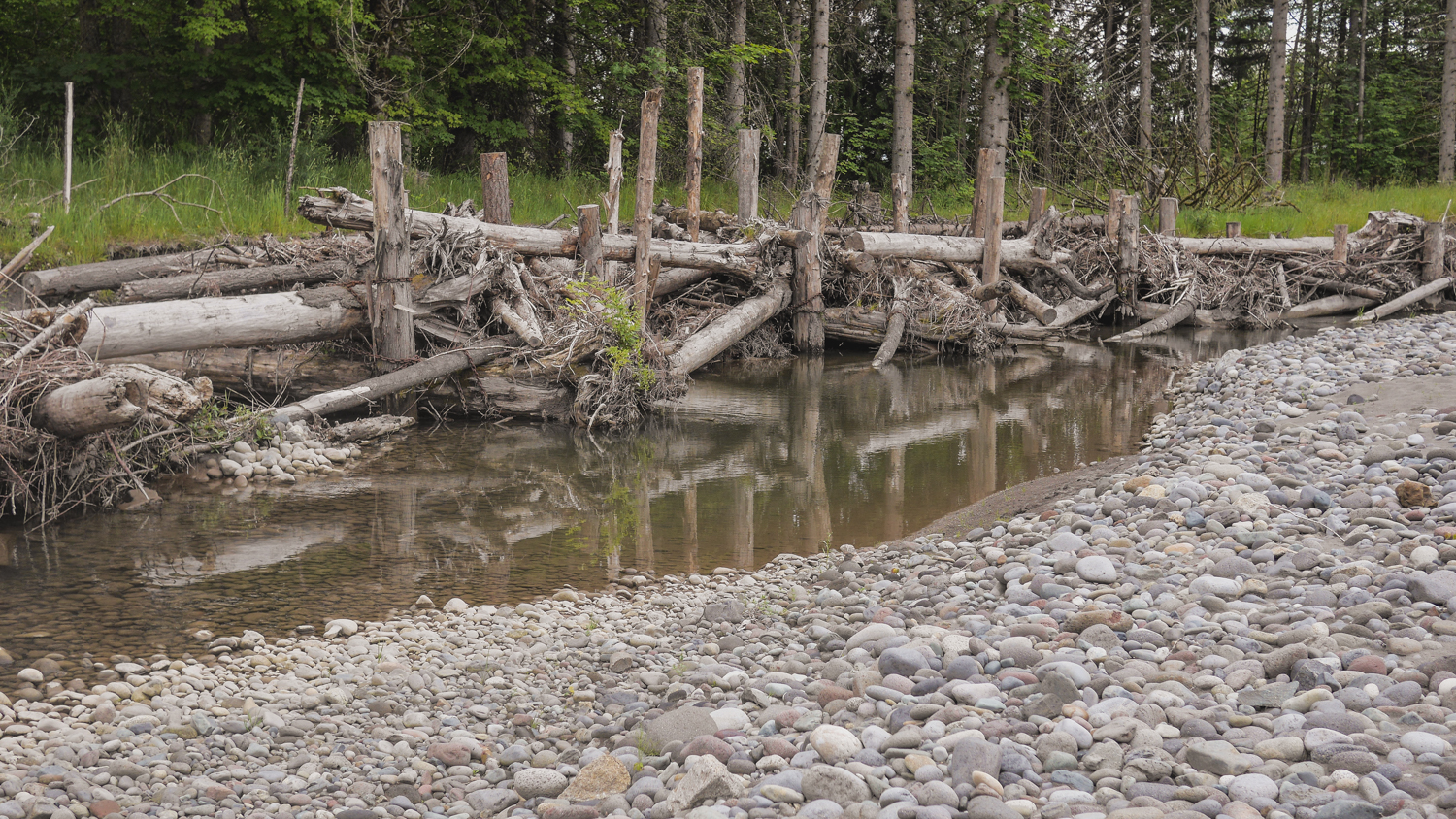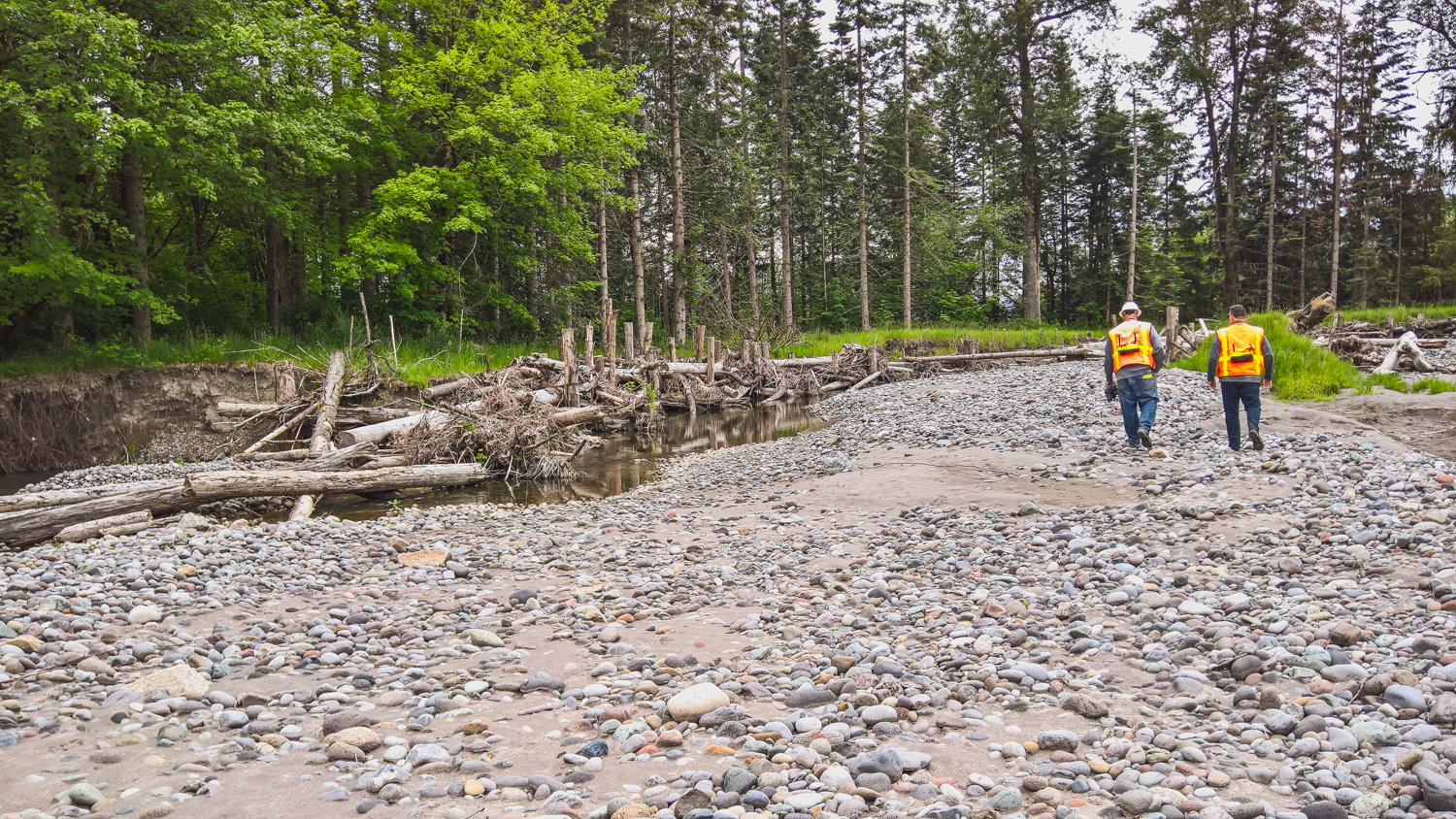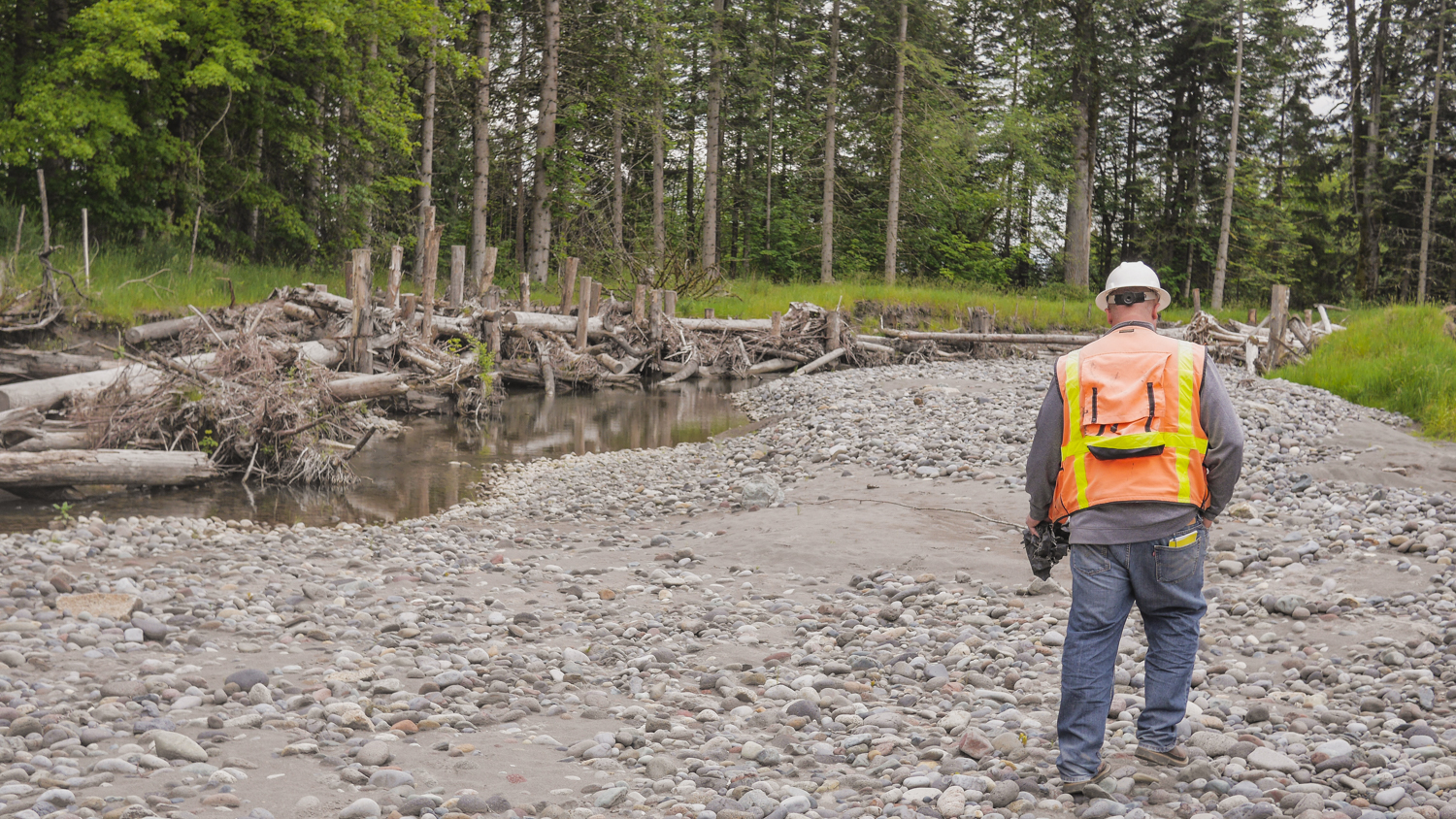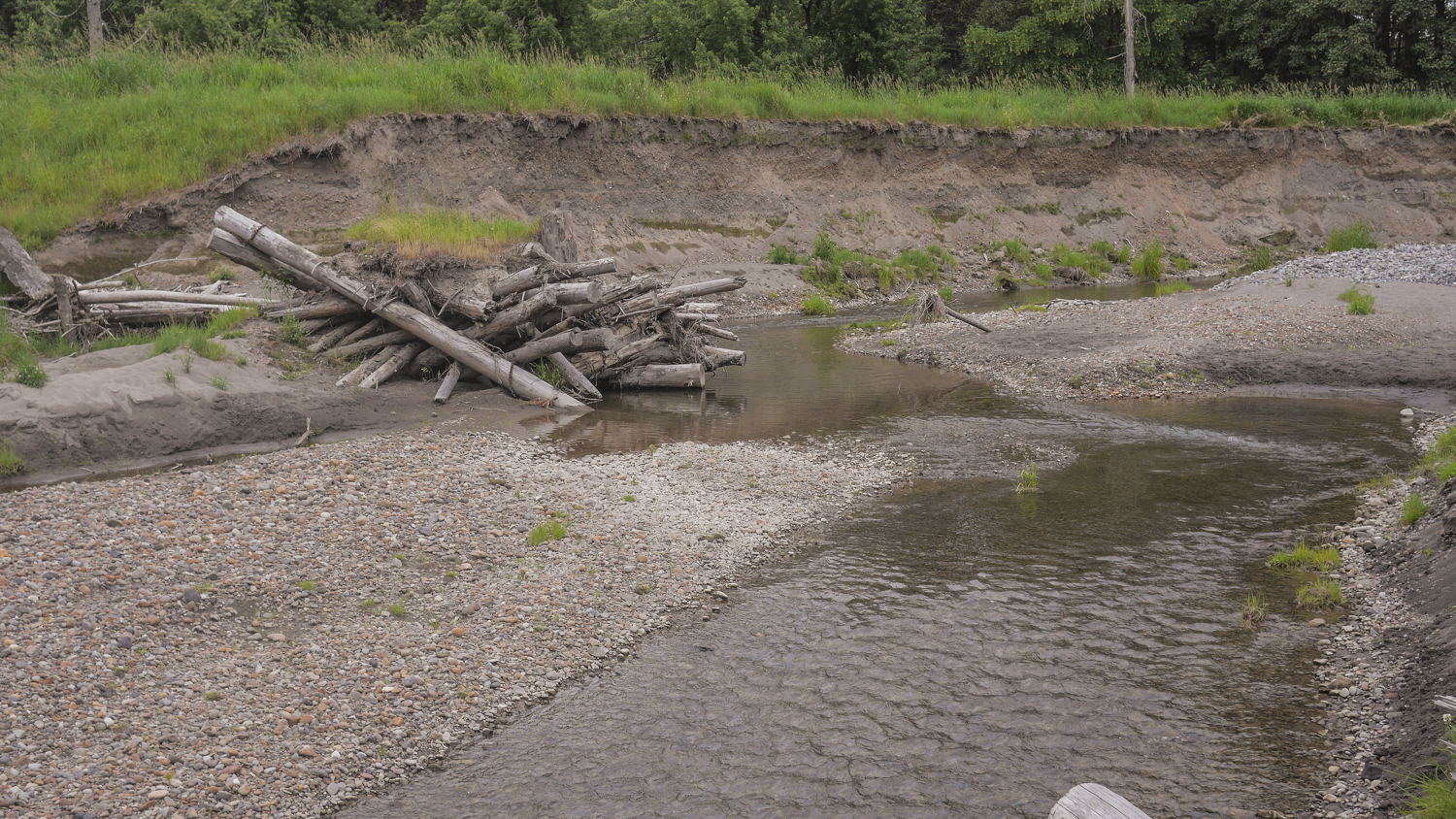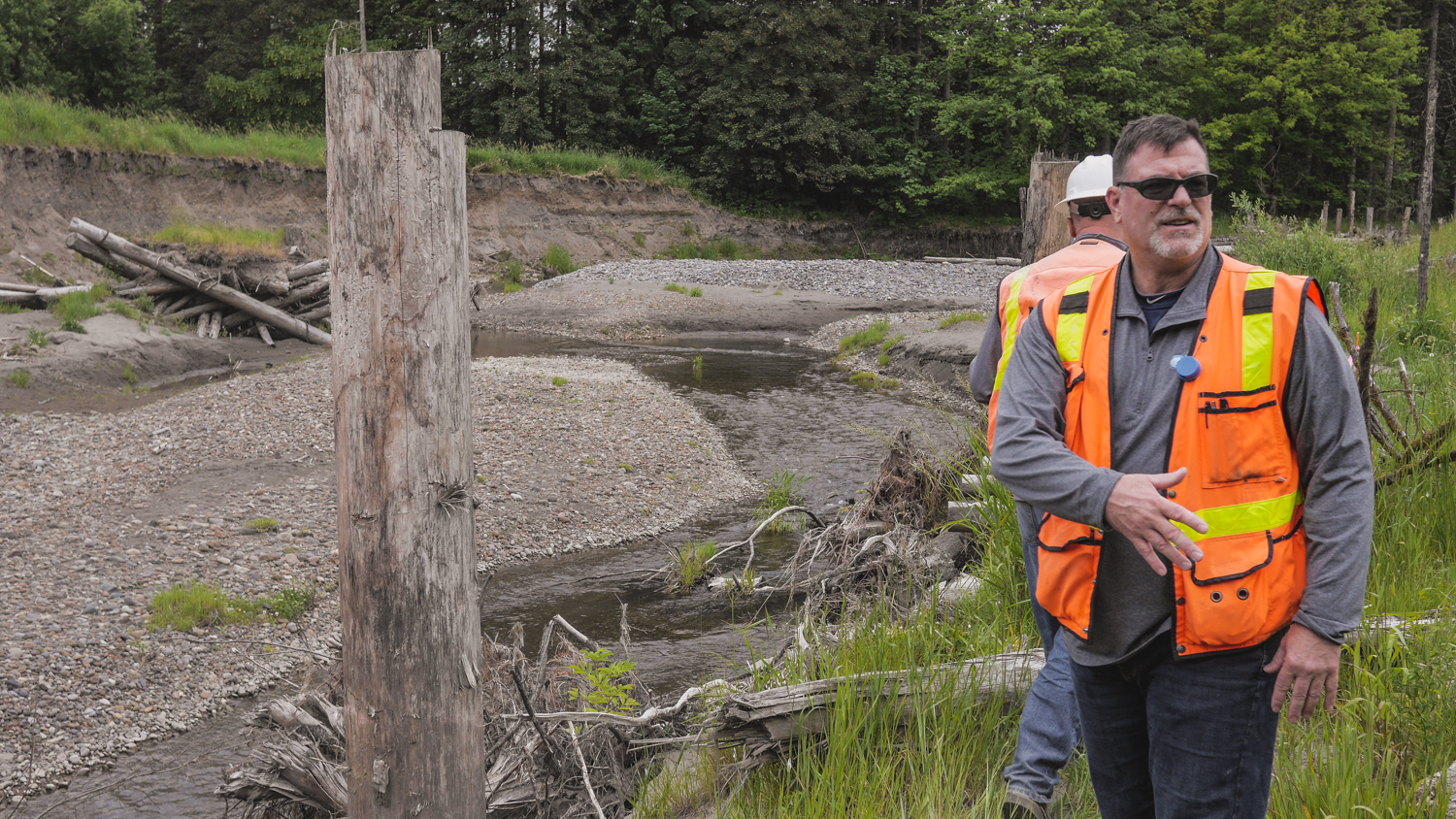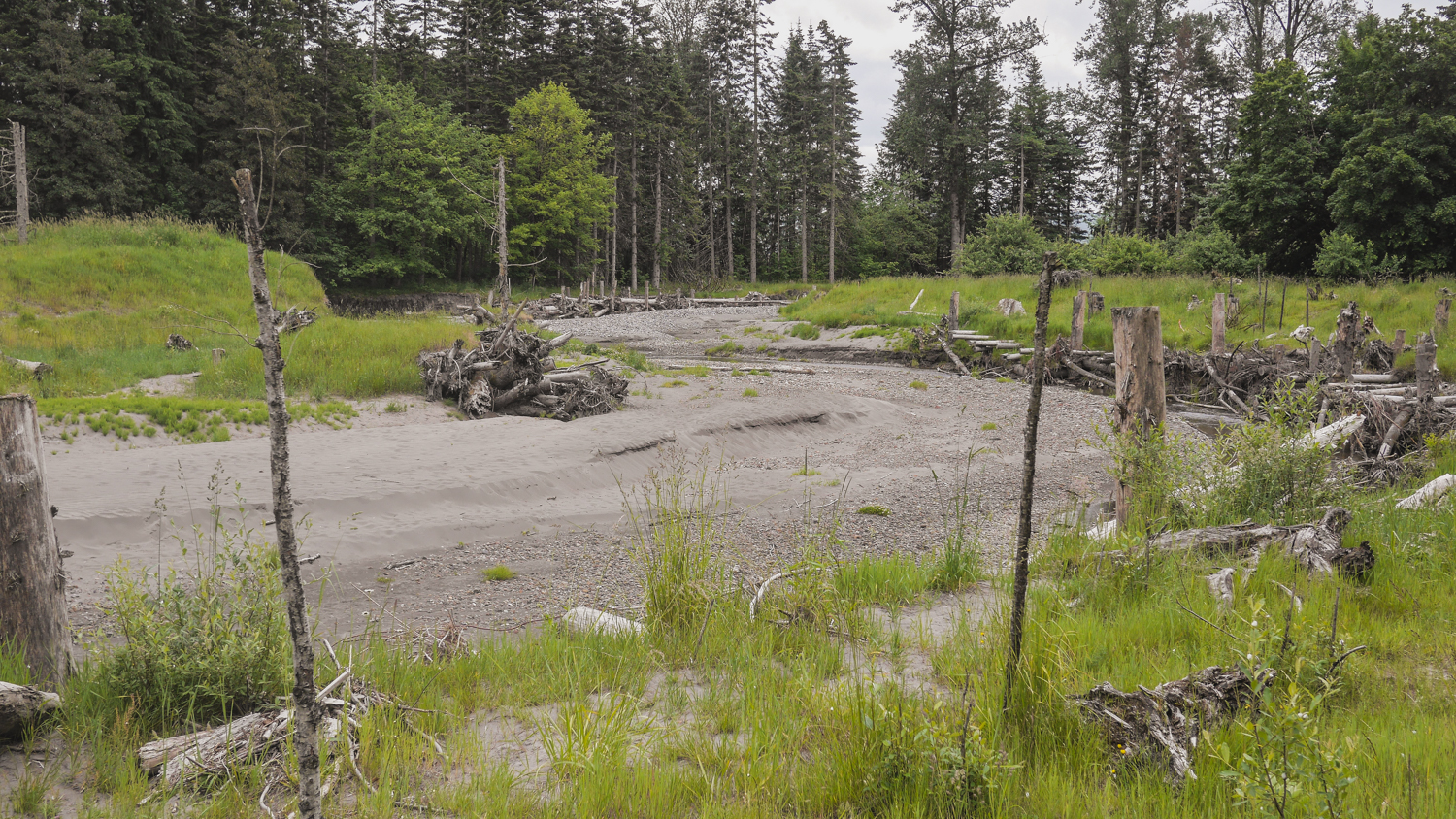Welcome to Flood Season
Written by Julie Morse, Regional Ecologist, The Nature Conservancy in Washington
Photogrpah by Andy Porter, Northwest Photographer
It’s flood season here in Western Washington. That’s nothing new of course. Puget Sound rivers have reached flood stage over 1400 times in the last 20 years. It’s just part of life here.
Albeit, a very stressful part of life. Especially for floodplain managers whose jobs it is to minimize the damage caused by swelling rivers that naturally want and need to jump their banks – wreaking havoc on people’s homes and businesses, undermining transportation corridors, and putting lives and our economy at risk.
Ken Wolfe has one of those unenviable floodplain manager jobs. He is responsible for safety of the City of Orting which sits on the Puyallup River -one of the most flood prone rivers in the State. So it’s strange to see him walking around with a big smile on his face this time of year.
Last week a “pineapple express” or what the weathermen call an “atmospheric river” moved through our region bringing heavy rains. These storms are common here and can result in flooding, especially in the fall when there’s little snowpack in the mountains to absorb all that rain or when it warms rapidly after snowfall so rain and snow melt create a double whammy. The Puyallup River was raging and peaked at over 16,000 cubic feet per second.
The last time the river got that high was in January 2009, when it broke through the levee and caused 26,000 people to be evacuated in the Puyallup River Valley, in and around the City of Orting It resulted in one of largest urban evacuations in the State’s history. Despite the fact that it was the 4th highest flow ever recorded on the Puyallup, this year only a handful of residents voluntarily evacuated.
And instead of overseeing the chaos of filling 17,000 sandbags as he did in 2009, Ken Wolfe is smiling.
Just last month major phases of the Calistoga Reach Floodplains by Design Project was completed.
In Orting, the City moved 1.5 miles of the levee back to expand the width of the river corridor by up to 4 times - giving the river more room to spread out and slow down. Clearly, it worked, and has helped dramatically reduce the flood risk for this community.
Meanwhile, just downstream, this summer Pierce County completed an effort to reconnect about 150 acres of floodplain and carve a new side channel to the river. During last week’s high flow, this new channel took about 30% of the flow out of the mainstem Puyallup, dramatically reducing pressure on riverbank levees that protect a large subdivision.
The project in Orting is one of the first Floodplains by Design projects to be completed, and the first to stand the test of a big flood. What’s more, in addition to the dramatically reduced flood risks in this area, these projects are also providing other important community benefits. The side channels and reconnected floodplains provide critical salmon spawning and refuge habitat. And when the waters recede, city and county residents are left with about 2 miles of scenic riverfront open space.
The City of Orting and Pierce County deserve kudos for working together on a large stretch of river to implement projects that combined, reduce flood risk, restore critical habitat for salmon and improve the quality of life for residents of the area. This is exactly what Floodplains by Design program is all about – working together to implement big projects that produce big results.
Related Blog Posts
Farms, Fish & Floods Initiative
Welcome to Flood Season
Fisher Slough & the Flood






